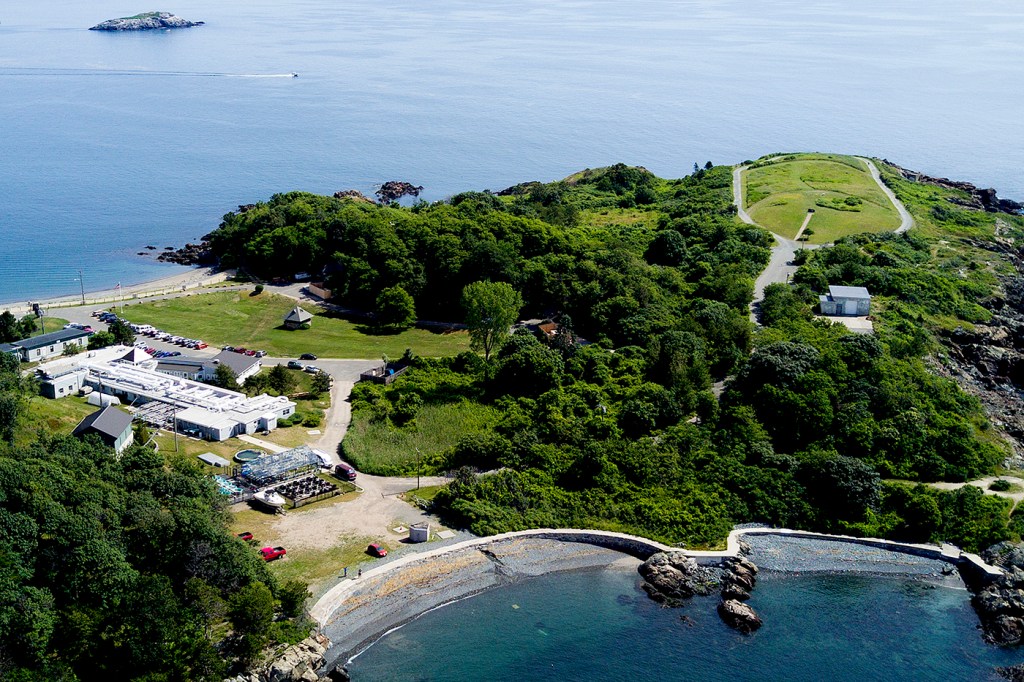How to explain to scientists how to explain science

How will the rising sea level change the impact of storms? What can bird colonies tell us about the larger coastal ecosystem?
These are some of the questions Marc Albert is focused on answering. As a manager for the National Parks of Boston, Albert works with scientists to study, monitor, and protect the 34 islands and peninsulas that make up Boston Harbor Islands National Park and Recreation Area.
One important part of Albert’s job is explaining scientific studies underway at the parks to a general audience, including park visitors and volunteers. But this is no easy feat. The average citizen knows very little about coastal breeding birds, for example, and even less about the relationship between these birds and the health of the ecosystem.
Albert was one of about 45 scientists who convened at Northeastern last week to learn the fundamentals of explaining science to a lay audience.
“It’s really important that the public understand the value of science in society and how science works,” Albert said. “At the National Parks, we have a role in helping to translate that to the general public.”
The two-day course was hosted by Northeastern and the Boston Harbor Ecosystem Network, a collection of organizations and individuals dedicated to educating the public about coastal environments in the Boston metropolitan area. The workshop was facilitated by the Integration and Application Network at the University of Maryland’s Center for Environmental Science, and was made possible by funds from the US EPA, MassDEP, and MassBays program.
“Everyone should understand science – not just scientific concepts, but how science works and how rigorous it needs to be in order to be accepted by peers,” said Carole McCauley, outreach program coordinator at the Marine Science Center in Nahant, who organized the workshop. “Equipping scientists with the tools to effectively communicate their work to diverse audiences ultimately benefits society.”
These tools for unpacking complex subjects can be as simple as the ABT rule, a tactic for making tricky concepts accessible by strategically placing the words “and,” “but,” and “therefore.”
Albert provided an example:
“The irreplaceable historic resources of the Boston Harbor Islands are threatened by sea level rise, and there is an increasing rate of sea level rise predicted. But it’s very difficult for us to get good data on the impacts of storms because they happen in the winter. Therefore, we are asking you, Boston Harbor boaters, to help us by going out after storms in the winter and taking photographs from designated locations,” he said.
Other tips shared at the conference were similarly straightforward. Sketching out several quick ideas before producing a full draft of an article or graphic is an easy step often overlooked by busy scientists, said Albert.
Participants also learned the value of symbols in quickly communicating complex ideas. For example, the classic stoplight scorecard is a visual element almost anyone in the world can understand—red means “hazard” or “stop” while green means “go.” A stoplight graphic could be used in parks to indicate protected areas where scientific studies are taking place.
“Something like a symbol of a bird or a symbol of a plant are universal. They can make your point really clearly without having to provide a lot of text,” Albert said.
Participants also learned about such free resources as an image library, symbols library, and video library.
“Now instead of reinventing the wheel every time I need to create a map, I can use something that’s already been done and make it better,” said Marta Ribera, a spatial ecologist for The Nature Conservancy, also attended the workshop.
Ribera said another lesson she learned from the workshop was the importance of knowing the intended audience before starting a project.Her job is to analyze data and create regional maps of coastal and oceans habitats so scientists and policy-makers can make informed decisions about the ways these habitats are used.
For example, some areas of the ocean are better for commercial fishing, while others are suited for wind energy farms. Some places are perfect for recreational fishing, while other areas should be protected from all activities.
“Something that stuck with me is that it’s not about what you want to tell your audience, it’s about what they need to learn,” Ribera said.





